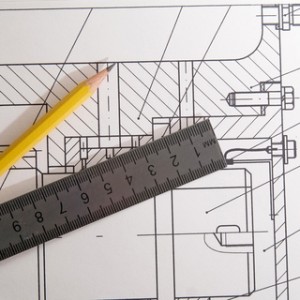
With efforts to ensure U.S. competitiveness in a global economy revolving around stronger STEM education, some policy makers are looking at whether it makes sense to include engineering standards for K-12 education. But the ability to establish a national set of standards for K-12 engineering education might still be out of reach, according to a new study from the National Academy of Sciences (NAS).
The study, “Standards for K-12 Engineering Education?” claims that “although the main ideas in K-12 engineering education are largely agreed upon, data based on rigorous research on engineering learning at the K-12 level are still not sufficient to develop learning progressions that could be reflected as standards.”
Educators are split on whether establishing K-12 engineering standards is a feasible option or not.
“We have had academic K-12 engineering standards in Massachusetts since 2001; the next generation of national science standards will likely include engineering standards as well,” said Jake Foster, director of science and technology/engineering with the Massachusetts Department of Education.
Elizabeth Parry, coordinator for the North Carolina State University College of Engineering, disagrees.
“Of course it is possible [to create engineering standards], but in my opinion it doesn’t make sense. … [Engineering] skills cut across all core subjects in K-12, and separate standards would not sufficiently measure achievement,” said Parry.
Elizabeth McGrath, executive director of the Center for Innovation in Engineering and Science Education (CIESE), said that while developing national standards is not a simple process, it can be accomplished.
“One approach is to encourage the infusion of engineering [education] into core courses at the K-12 level, like science and math, but also language arts, art, and other subjects, to provide students with exposure to engineering design, the iterative design process, [and] the practical application of science and mathematics principles to real-world challenges in hands-on/minds-on learning. This approach has many practical benefits and has shown in some of our own research to increase student learning in core subjects like science,” McGrath said.
The NAS study included infusion as a possibility while standards are revised. The study also proposed mapping, or “integrating ‘big ideas’ in engineering onto current standards in other disciplines.” Mapping is a more retrospective activity compared with the proactive efforts of infusion, the study said.
The lack of engineering-specific standards set forward by the Common Core standards initiative also is an issue, though the National Research Council (NRC) is working to develop science standards for the Common Core project.
“If the NRC science standards with engineering are adopted, the chances of more students receiving engineering education will greatly increase,” said Parry.
“The draft framework for the new science standards reflects the recent emphasis on the connections between science, technology, engineering, and math by including engineering in a prominent position: as the fourth disciplinary domain along with life sciences, Earth and space sciences, and physical sciences,” McGrath said.
While educators are unsure if developing engineering standards is the right option, all who spoke with eSchool News agree that exposure to at least some engineering education is important.
“From an employment perspective, engineering is one of the highest-demand fields that will determine whether we as a state and country can compete internationally,” said Foster.
According to the 2007 study “Rising Above the Gathering Storm,” 85 percent of economic growth per capita is as result of technological innovation.
“If the U.S. is going to remain an affluent society that is able to provide health care, education, and all the things citizens need, then we need to find ways to steer more students into engineering and technical fields,” said McGrath.
To steer those students, educators must help change the stereotype of just what, exactly, an engineer is.
“When many outside of the engineering profession think of engineers, images of white men wearing pocket protectors working in isolation with dirty machines often come to mind,” McGrath said. “The engineering education community has to do a better job of communicating that an engineering degree is the pathway to students’ ability to make a real difference in the world.”
Parry hopes students will achieve some modicum of engineering education that will at least allow them to become part of today’s technologically advanced society.
“The end goal is not to create millions of engineers, although if we were able to do that, we could more effectively compete on all playing fields with countries like China and India,” she said. “And it’s really more than competition—technological literacy is a national security issue. Rather, our general citizenry is fairly technologically illiterate.”
Foster agreed.
“Given the prevalence of technology in our world—all the designed products we use every day—every student should have a basic understanding of how and why those products are designed and produced. Each student should have a basic literacy of the designed world they inhabit,” Foster said.
The study states that there is limited experience with K-12 engineering education in the U.S. and a lack of qualified teachers. It also pointed to concern over how mathematics and science would be affected by possible reforms, and it said there are “significant barriers” to stand-alone engineering education in a curriculum that includes a variety of other learning goals in more “established domains of study.”
- New film fights negative perception of teachers - September 16, 2011
- Textbook-free schools share experiences, insights - September 7, 2011
- Social websites are latest sources for plagiarized material - September 1, 2011


Comments are closed.